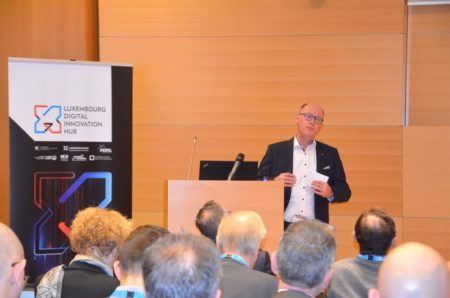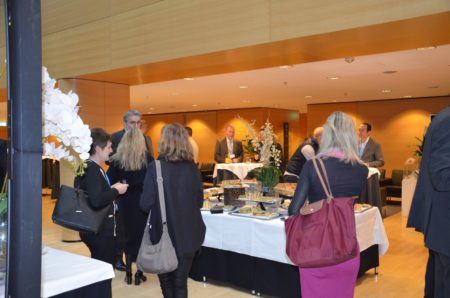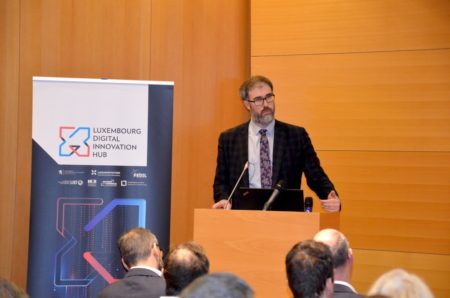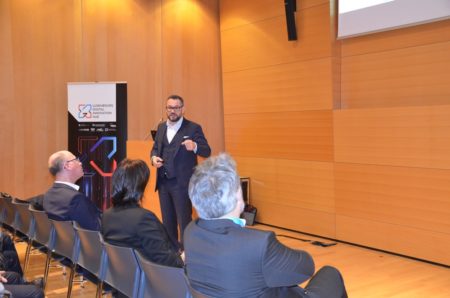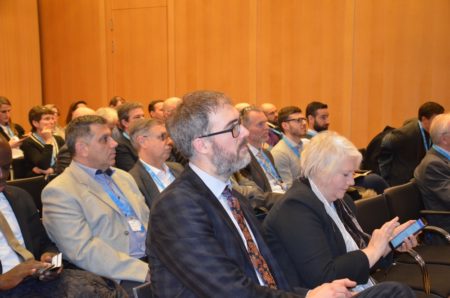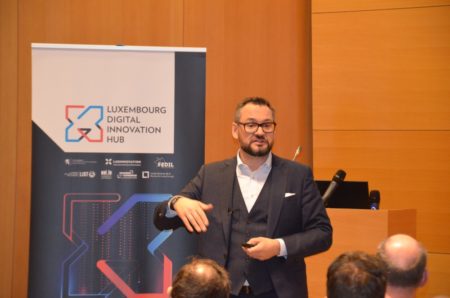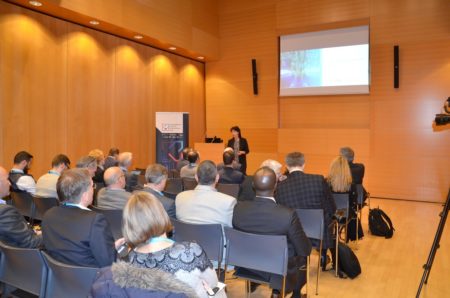The digitalisation and automation of industrial processes is often no longer an option – many industrial companies have to choose between jumping on the industry 4.0 bandwagon or seeing their business decline in the coming years. While tackling all the technological and organisational challenges that come with digital transformation, companies sometimes forget to take into account the perspective of a very central player: the customer.
Improvement: a matter of perception
The second L-DIH Talk, entitled “Redefining the customer experience”, took place on 27 February 2020. Tobias Stolz, country manager of digital transformation consultancy firm Sopra Steria PSF Luxembourg, opened the discussions by presenting the results of a project implemented by Sopra Steria to help a client company digitalise its request services via a standardised digital interface. The handling of client requests was completely automatised, reducing the need for human interaction to almost zero. Initially, the project seemed highly successful: the company managed to increase the number of requests processed each month from 8,000 to 12,000, the average time needed to handle a request was reduced from 5 days to less than an hour, and only 2% of requests had to be reworked, compared to 5% before.
The customers missed the human interaction.
However, after some time the company realised that in spite of its improved performance, its customers were less satisfied than before. “They missed the human interaction,” said Mr Stolz. “They could only order standard products. If they needed an exception, they still had to go through the standardised interface and could only speak to a person at the very end of the process to explain their specific needs. Similarly, if something went wrong with their order, they first had to interact with a computer before being put in contact with a person.”
Putting the client perspective first
The challenge is therefore to succeed with automation in order to save costs, increase the output and improve quality, and at the same time make sure that the customer experience remains the same or, ideally, becomes even more positive than before. The key is putting the clients at the very centre of the process, and understanding their considerations and their way of working.
CFL Group, the Luxembourg railway company, has radically changed its digital approach over the past few years. The company has started to use technologies such as virtual reality and the internet of things, but is well aware that the human factor is at least as important. Christian Kettmann, CIO of CFL Group, presented the reworking of the company’s website as an example.
Building a new website is no longer a one-off project, it is an on-going process with features constantly being added, adapted or deleted depending on their usefulness.
“We used to have a nice-looking website, but our question was whether it was really useful for customers,” he explained. “In order to find out, we asked travellers at the railway stations what they needed. For them, the trip does not start at the station – it begins at home when they start looking for a suitable train connection to their destination and reflect on where they can park their car, which is the best way to get from the station to their final place of arrival, and so on. We then developed an MVP – minimum viable product – that could quickly be published so that we could get direct feedback from customers. Building a new website is no longer a one-off project, it is an on-going process with features constantly being added, adapted or deleted depending on their usefulness.”
Building a customer experience that creates growth
Marc Sniukas, Director Innovation & Head of the Deloitte Garage at Deloitte, spoke about how design thinking can be used to find completely new business models and sources of revenue by focusing on the customer experience. The first step of the design thinking approach is to develop an in-depth understanding of the challenges that clients face, and clearly articulate what the problem is that needs to be solved. Only once this is done, is it time to brainstorm on potential solutions that can then be prototyped and tested.
The voice of your employees is also a very important source of information.
This is not always easy to do for industrial companies that in many cases are not in direct contact with the end users of their products. Claire Mammerickx, CCXP – CX Manager at Prodware, nevertheless recommended organising face-to-face meetings with customers when possible to understand their point of view. “The voice of your employees is also a very important source of information,” she pointed out. “They know the customers and understand their difficulties.” She also underlined the importance of taking into account the whole ecosystem surrounding the company. “All the people who work with you – suppliers, showrooms and so on – need to be aligned and have the objective of providing the same experience.”







